Ebi-Tei Bekkan is a family-run restaurant in central Toyama, located in a side street a short walk from the castle. It has been around in one form or another for a hundred and fifty years, and at this location for forty years. The head chef is Mura Kentaro, and his wife runs the front of house service.
The main dining room is on the ground floor, with a counter and horigotatsu style seating (very low seats with a sunken area to tuck your feet away), whilst upstairs there are private rooms with traditional table and chairs should you prefer. We had a private room with a nice view over a little rock garden.
This being a kaiseki restaurant, there was a set seasonal menu only. Dinner began with cold abalone, its liver, some greens and pickled vegetables. This was nicely presented and the abalone was tender, something not easy to achieve (usually by steaming for many hours). The pickling juices of the vegetables went nicely with the flavour of the abalone, and the greens had excellent flavour (15/20).
Next was a soup of white fish with mushrooms and ginger and a little sansho, a relative of the Sichuan pepper which has a gentle spicy numbing effect on the tongue. The soup was fine and the sansho a nice touch, but I always find that putting fish in soup affects its texture and does not show it off to its best, so although this is a very traditional way of serving it has always rather puzzled me (13/20). This was followed by what was described as grilled blowfish "roe" with chives and soy sauce vinegar. It was really shirako, the milt or sperm of the blowfish. Shirako is a quite hardcore Japanese ingredient with a soft, slimy texture vaguely reminiscent of brain, and although I have now tried it a few times I confess that I have yet to acquire a taste for it. It is not for the faint-hearted, though some people are fond of it. I won't attempt to score this though doubtless it was very good blowfish sperm. The sauce at least was nice.
The meal continued in safer territory with the sashimi course. This featured sea bream and sayori, or Japanese half beak. Bream can be quite a chewy experience in Japan but the version here was tender, but I preferred the half beak, a silver fish with shimmering skin that had a clean flavour. The fish came with pickled ginger as well as soy with freshly grated wasabi on the side as garnishes. This was very good sashimi (16/20). A local speciality is hotaruika or firefly squid, named due to its blue luminescence during spawning season. Firefly squid being fished at night is a spectacular sight. Because of its small size, you can eat the whole squid in one bite and enjoy the differing textures of the cephalopod in a single mouthful. It can be cooked but here was served raw after being marinated in quite a rich soy sauce, topped with a little pickled ginger. I thought this version was very good (16/20).
Shabu shabu beef was next. A little pot of boiling water is brought and you cook thin slices of marbled beef and the accompanying greens yourself. The beef had good flavour, and I really liked the stalky greens that came with it, but this is not really a dish that makes much sense to score since the kitchen has essentially abdicated responsibility here. I am surprised there is not a Japanese cooking style where you are brought a live cow, a gun and a butcher's knife and left to get on with it, or perhaps there is.
The next course was tempura, here featuring nodoguru or Japanese blackthroat sea-perch, served with tempura of mountain vegetables. The tempura batter was very light, but the star was the perch, which had lovely, meaty flesh and had gorgeous rich flavour (easily 17/20). This was followed by a dumpling of horse mackerel (aji). The fish was bound up into a dumpling using egg white, and the overall effect was lovely. The horse mackerel had excellent flavour and the texture of the dumpling was very good, served with top quality baby leeks (16/20).
As is traditional in a kaiseki meal, the final savoury course was rice. Here it was cooked with tiny fried white shrimps, and served with a variety of pickles. There were two desserts. The first was a jelly of biwa (loquat in English). This loquat was apparently from Japan, though it is native to the hillier regions of China. Loquat is an exquisite fruit with a flavour that is hard to describe but is a sort of mix of apricot and apple. The treatment of it here as a jelly was a very successful one, the jelly clear and having perfect texture, the lovely flavour of the fruit embedded in each mouthful of jelly - gorgeous (18/20). This was followed by something less to my taste, sweet potato with red bean paste and sakura (cherry blossom flower). The cherry trees were just coming to the end of their brief flowering season in the town, so this was nothing if not seasonal.
Service was from waitresses dressed in traditional Japanese costume, and this was both helpful and charming. At one point, when struggling with the translation of a particular fish, one waitress disappeared from the room and returned with a book about sushi, so that we could be sure of the proper translation. The bill for two came to €50,800 (£181 per head), including copious amounts of Asahi beer. This is quite a lot but the quality of ingredients is high and clearly a lot of effort has gone into both the food and the service experience.



















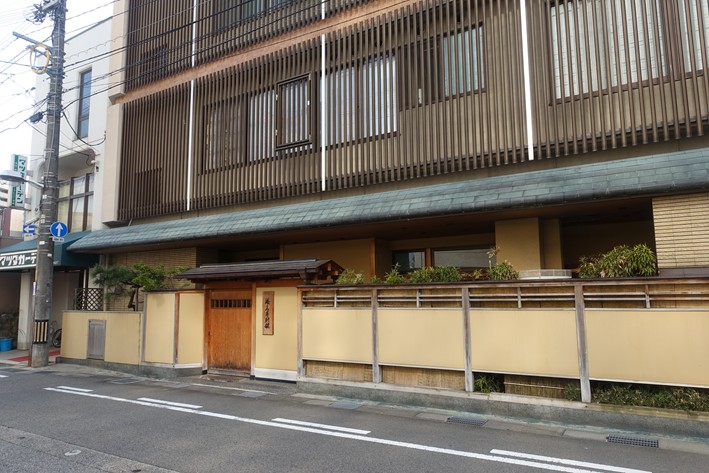


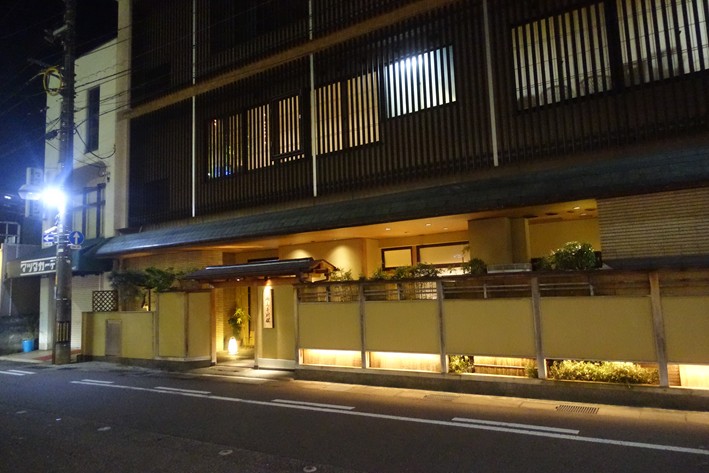
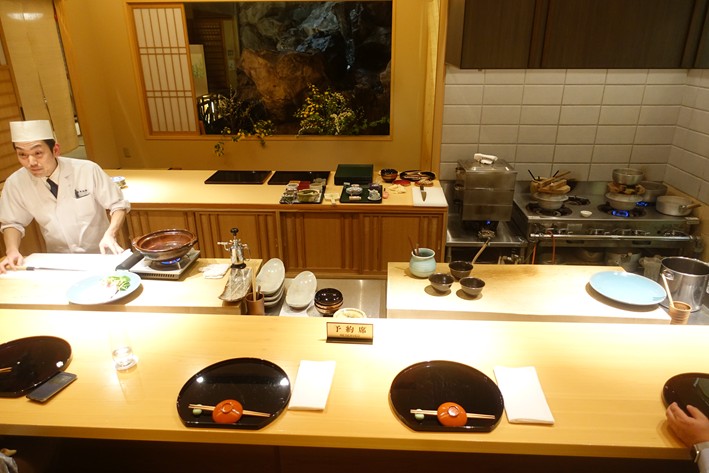
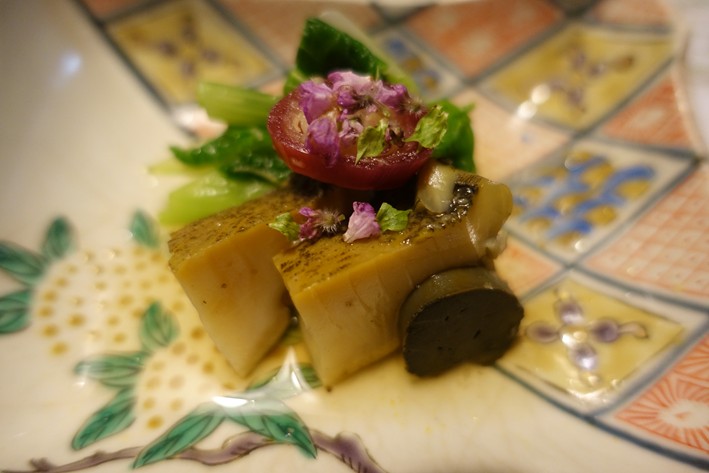
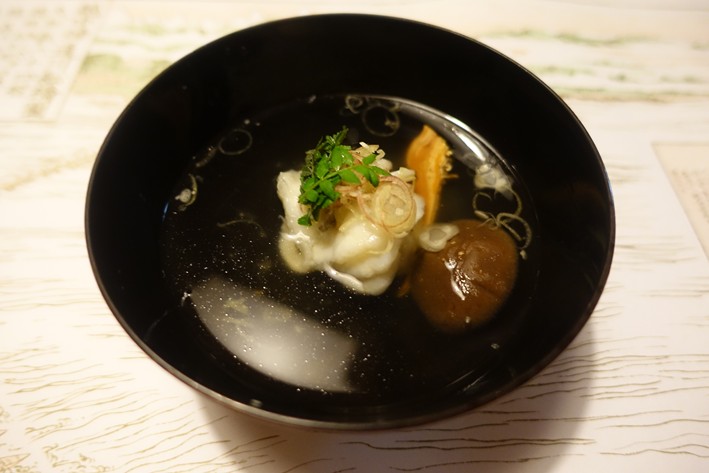
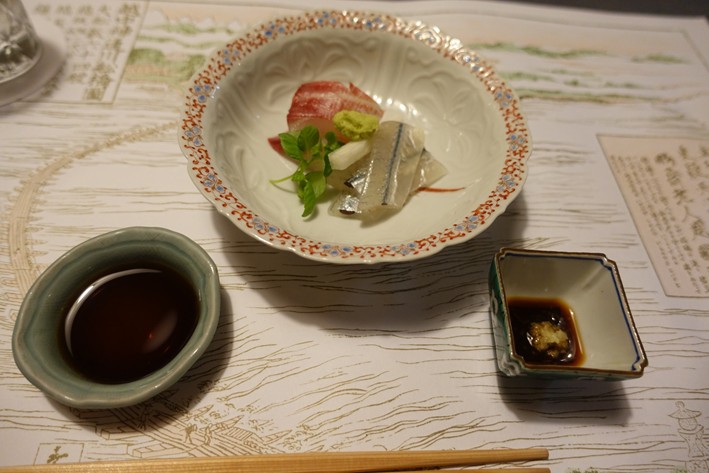
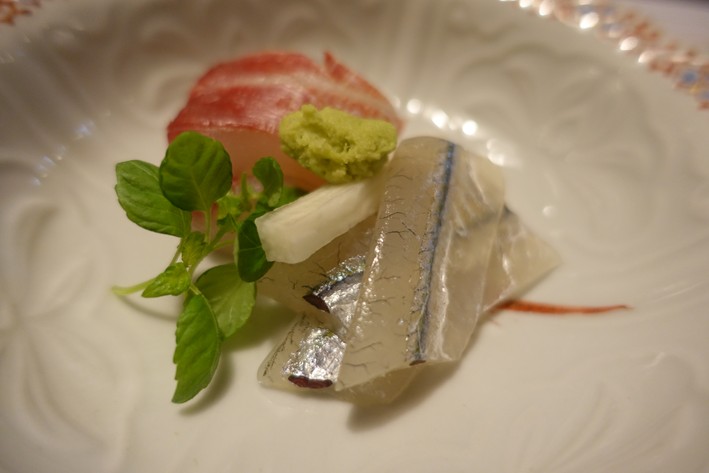

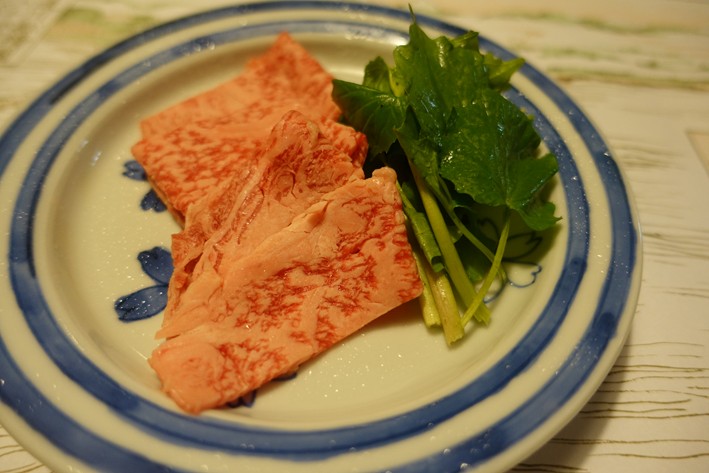
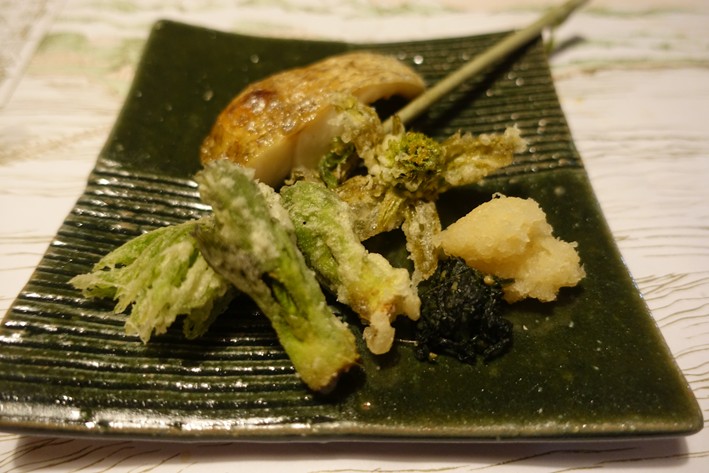
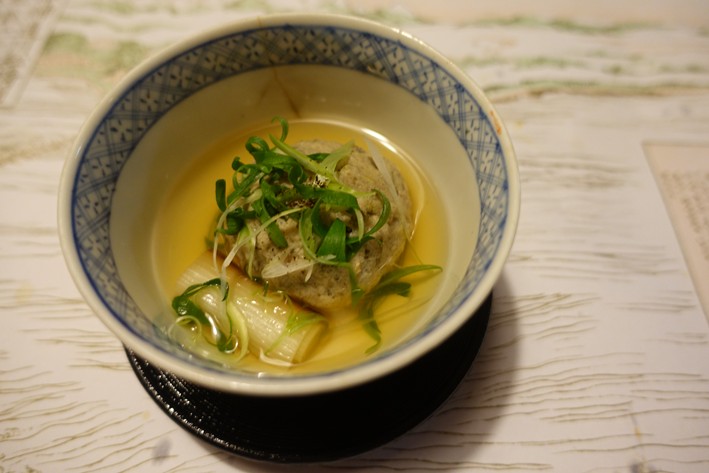
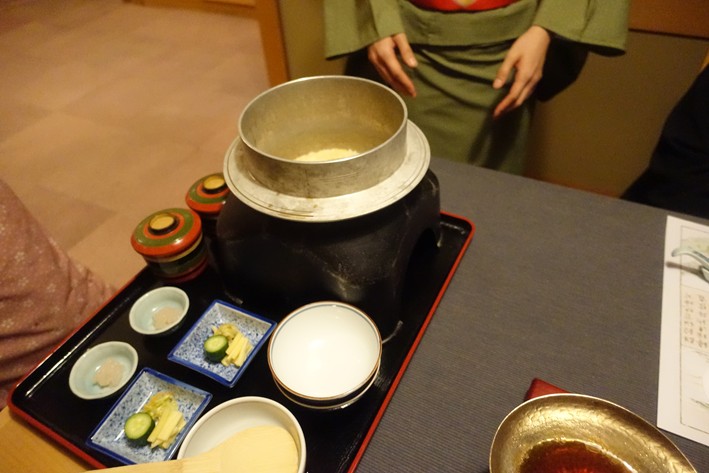
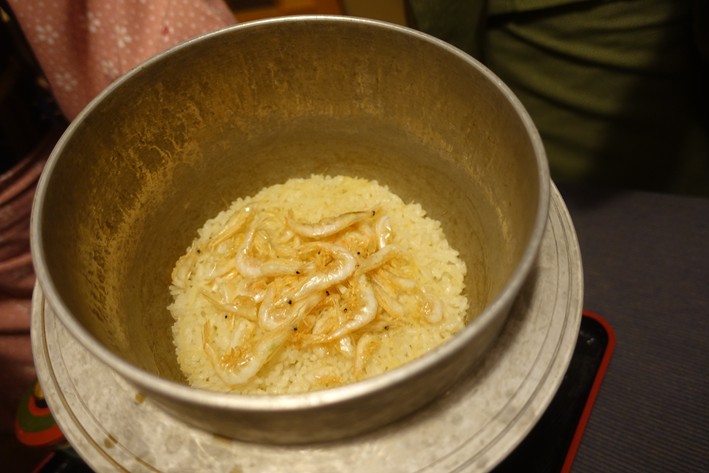
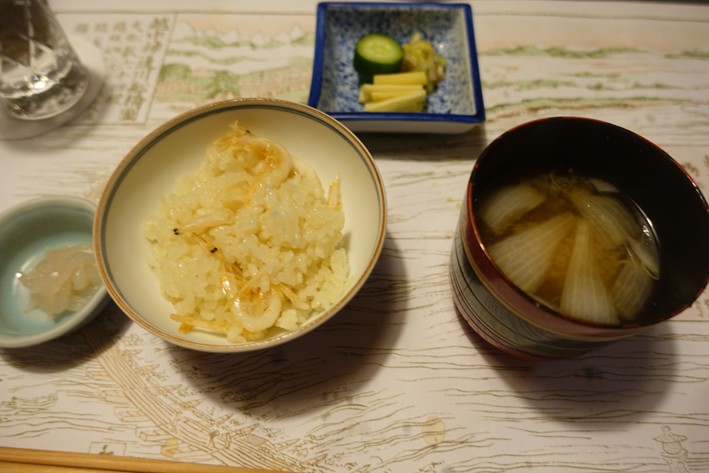
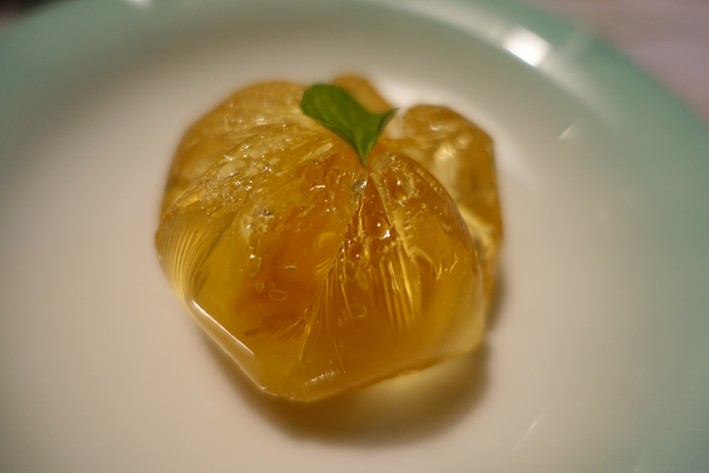


Add a comment
Thank you for submitting your comment, this will be checked and added to the website very soon.
User comments